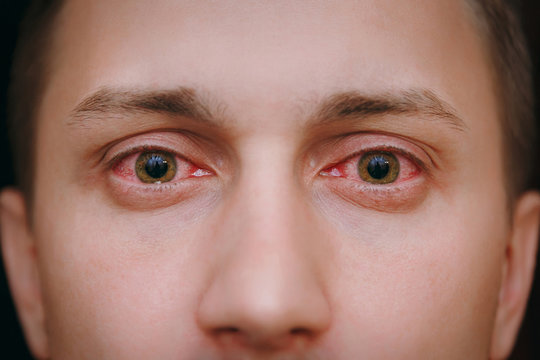pink eye
Understanding Conjunctivitis Symptoms and Signs : A Comprehensive Guide
Conjunctivitis, also referred to as pink eye or eye flu, is an eye condition that can make people feel uncomfortable, irritated, and have red eyes. The thin membrane that covers the white area of the eye and the inner surface of the eyelids, the conjunctiva, becomes inflamed, which is how it is identified. To assist you in recognising and comprehending this widespread eye condition, we will break down the conjunctivitis symptoms and indicators in this post. Redness of the Eye The redness of the eyes is one of the main and most obvious signs of conjunctivitis. Because of the pink or red colour of the eye caused by the inflamed blood vessels in the conjunctiva, the condition is frequently referred to as "pink eye." Depending on the underlying cause of conjunctivitis, the degree of redness can range from mild to severe. Itching and Irritation Conjunctivitis frequently causes itching and irritation in the affected eye or eyes. People may feel the urge to touch their eyes to ease the itching, which can range from mild to severe. However, in the event of infectious conjunctivitis, scratching the eyes can exacerbate the illness and possibly transmit the infection. Watery or Discharge from the Eye Conjunctivitis can cause the eyes to tear excessively or discharge. While bacterial conjunctivitis may provide a thicker, yellow or greenish discharge, viral conjunctivitis typically results in a clear and watery discharge. Due to the body's immunological reaction to allergens, allergic conjunctivitis can also result in watery discharge. Swollen Eyelids Conjunctivitis occasionally results in swollen eyelids, making it difficult to fully open or close the eyes. The inflammation that affects the tissues of the eyelids usually causes swelling. Sensitivity to Light (Photophobia) Conjunctivitis can cause photophobia, a condition in which the eyes become sensitive to light. People who have conjunctivitis may experience discomfort and suffering when exposed to bright lights or sunshine. Crust Formation on the Eyelids Particularly after waking up in the morning, bacterial conjunctivitis can cause the development of crusts or "eye boogers" on the eyelids. These crusts develop as a result of dry discharge gathering on the eyelids while you sleep. Foreign Body Sensation Some people with conjunctivitis could feel as though they have grit or a foreign body in their eyes. This sensation may be uncomfortable and increase the desire to massage one's eyes. For early detection and suitable care, it is essential to recognise the symptoms and signs of conjunctivitis. A qualified eye care practitioner must be consulted if you suffer redness, irritation, excessive tearing, or discharge from your eyes in order to make an accurate diagnosis and receive the appropriate treatments. While the majority of conjunctivitis instances are not dangerous and can be treated with self-care or medical procedures, prompt treatment can help reduce discomfort and stop the conjunctivitis from spreading to other people. Keep in mind that having healthy eyes is crucial for sustaining vision and general wellbeing.
Exploring Conjunctivitis Causes and Risk Factors: In-Depth Analysis
Millions of people worldwide suffer with conjunctivitis, also referred to as "pink eye," a painful and incredibly contagious eye illness. It happens when the thin, transparent membrane known as the conjunctiva, which covers the inner surface of the eyelids and the white area of the eye, becomes inflamed. The goal of this article is to throw more light on the numerous conjunctivitis causes and risk factors by further exploring their causes and risk factors. Types of Conjunctivitis Viral Conjunctivitis Adenoviruses in particular are one of the main causes of conjunctivitis. Being highly contagious, viral conjunctivitis frequently spreads through contact with infected people or contaminated surfaces. Watery discharge, redness, and itching are typical symptoms. Viral conjunctivitis can develop from viral illnesses like the common cold or upper respiratory tract infections. Bacterial Conjunctivitis Staphylococcus aureus, Streptococcus pneumoniae, and Haemophilus influenzae are a few examples of bacteria that can cause conjunctivitis. Bacterial conjunctivitis commonly presents in the morning with crusty eyelids and yellow or green discharge. It is typically spread through close physical contact with sick people, exchanging personal goods, or touching contaminated objects or surfaces. Allergic Conjunctivitis For certain people, exposure to allergens or seasonal changes can cause allergic conjunctivitis. Pollen, pet dander, dust mites, and mould spores are examples of typical allergens. These allergens cause inflammation of the conjunctiva in the eyes, which causes redness, stinging, and tearing. Although allergic conjunctivitis is not communicable, persons who are prone to allergies may get it frequently. Irritant Conjunctivitis Irritants like smoke, chlorine from swimming pools, or harsh chemicals can induce irritation conjunctivitis when they come into direct contact with the eye. Unlike infectious conjunctivitis, which is brought on by germs or viruses, irritant conjunctivitis is not contagious and typically goes away after the irritant is removed. This kind of conjunctivitis can be avoided by wearing appropriate eye protection and avoiding contact with irritants. Risk Factors A number of things make conjunctivitis more likely to occur: Age: Due to close contact in educational environments, children are particularly vulnerable to infectious conjunctivitis. a. Contact Lens Wear: Bacterial conjunctivitis can result from improper handling, prolonged use, or poor cleaning of contact lenses. c. Compromised Immune System: People who have compromised immune systems are more likely to have bacterial or viral conjunctivitis. d. Allergies: Allergic conjunctivitis is more likely to affect people who have a history of allergies. e. Environmental Exposure: People who live in crowded or unhygienic surroundings may be more likely to spread conjunctivitis. Conjunctivitis is a common and unpleasant eye ailment that has a number of potential causes. Whether it has a viral, bacterial, allergic, or irritating origin, being aware of the many causes and risk factors can help in either preventing the illness or ensuring that it is treated as soon as possible. In order to protect our eyes against the invisible invaders that might cause conjunctivitis, we must practice proper hygiene, avoid contact with infected people, and seek immediate medical assistance when necessary.
 Home Visit
Home Visit Upload
Upload





1707898101.webp)










 WhatsApp
WhatsApp